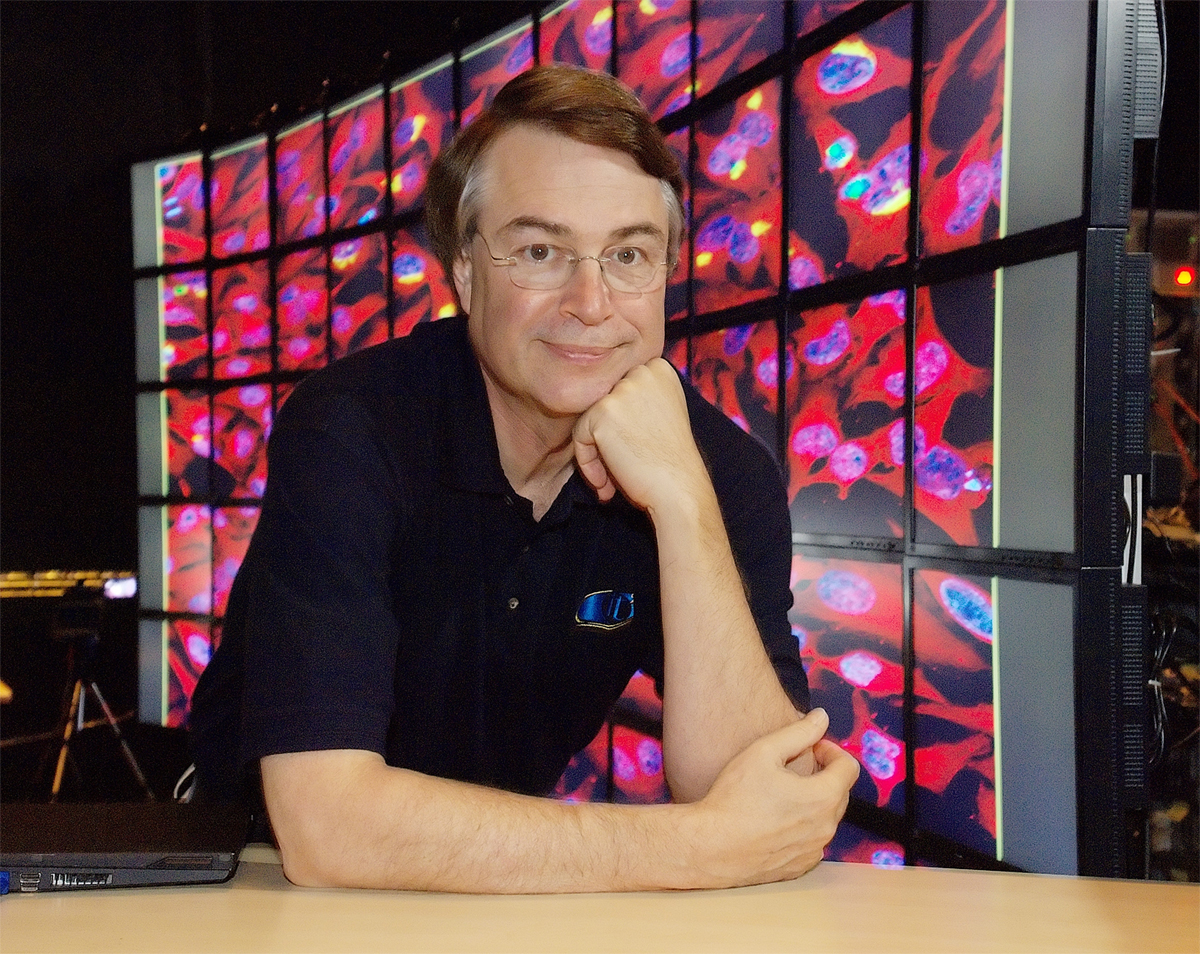The measured man
June 25, 2012 | Source: The Atlantic
Dr. Larry Smarr, Director of the California Institute for Telecommunications and Information Technology (Calit2), is charting his every bodily function in minute detail. What he’s discovering may be the future of health care: a patient-centric, computer-assisted world of medical care.
At 63, he is engaged in a computer-aided study of the human body — specifically, his body. It’s the start of a process that he believes will help lead, within 10 years, to the development of “a distributed planetary computer of enormous power,” one that is composed of a billion processors and will enable scientists to create, among many other things, a working computational model of your particular body.
Not just some generalized atlas of the human frame, but a working model of your unique corpus, grounded in your own genome, and—using data collected by nanosensors and transmitted by smartphone — refreshed continually with measurements from your body’s insides.
This information stream will be collated with similar readings from millions of other similarly monitored bodies all over the planet. Mining this enormous database, software will produce detailed guidance about diet, supplements, exercise, medication, or treatment — guidance based not on the current practice of lumping symptoms together into broad categories of disorders, but on a precise reading of your own body’s peculiarities and its status in real time.
When Smarr works out, an armband records skin temperature, heat flux, galvanic skin response, and acceleration in three dimensions. When he sleeps, a headband monitors the patterns of his sleep every 30 seconds. He has his blood drawn as many as eight times a year, and regularly tracks 100 separate markers.
He is in the vanguard of what some call the “quantified life,” which envisions replacing the guesswork and supposition presently guiding individual health decisions with specific guidance tailored to the particular details of each person’s body.
The way a computer scientist tends to see it, a genome is a given individual’s basic program. Mapping one used to cost billions. Today it can be done for thousands, and soon the price will drop below $1,000. Once people know their genetic codes, and begin thoroughly monitoring their bodily systems, they will theoretically approach the point where computers can “know” a lot more about them than any doctor ever could. In such a world, people will spot disease long before they feel sick. They will regard the doctor as more consultant than oracle.
“We are going to know—once you know each of your cells’ 6 billion genome bases, with all the imaging down to the micron level, and when you know every damn gene and every bacterium—at a certain point, there is no more data to know,” he says…. Once they are armed with the wiring diagram, he sees no reason why individuals cannot maintain their health the way modern car owners maintain their automobiles.
Medicine has barely begun to take advantage of the million-fold increase in the amount of data available for the diagnosis and treatment of disease. The way the system works now, when a technician examines the MRI of a patient’s abdomen, in two dimensions, on a single screen, she compares and contrasts it with perhaps thousands or even tens of thousands of other images she has seen and writes a report to the physician explaining, on the basis of her memory and experience, what is normal or abnormal in what she sees.
If Smarr is right, then our descendants may view early-21st-century medical practices, which we consider a triumph of reason over superstition, in the same way we now view 18th- and 19th-century folk remedies. A particularly likely candidate for scorn in an age of “quantified” health care is our one-pill-fits-all approach to prescription drugs.
Getting there will mean essentially dismantling the health-care industry as we know it. “A lot of enormously wealthy, established, powerful institutions in our society are going to be destroyed.”
